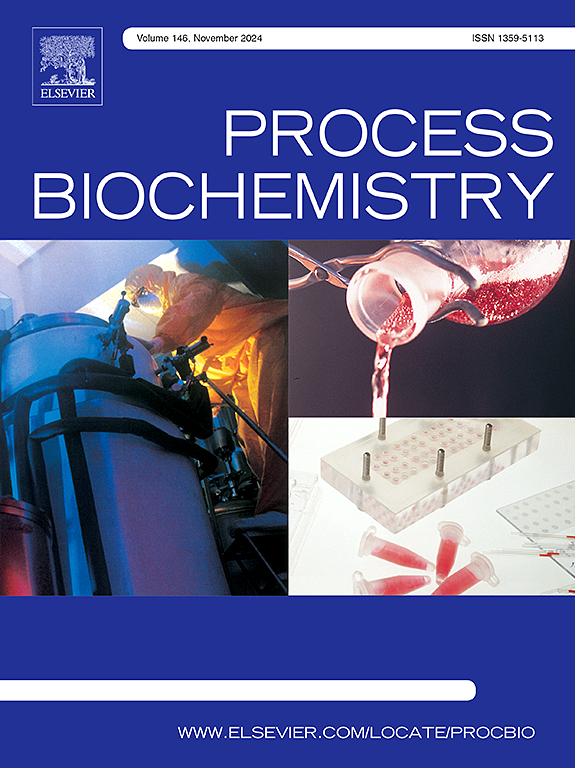Biosorption isotherm and composition of Amido black 10B decolorizing metal and salt tolerant bacterial consortium
IF 3.7
3区 生物学
Q2 BIOCHEMISTRY & MOLECULAR BIOLOGY
引用次数: 0
Abstract
The biological decolorization offers an eco-friendly solution for the treatment of azo-dye effluents from various industries. This study reports the decolorization, biosorption, and community composition of Amido Black 10B (AB) degrading bacterial consortium. The consortium achieved 72–75 % decolorization of AB in 24 h at 2000 mg/L concentration under static conditions and in the presence of heavy metals, NaCl, sucrose, and alkaline pH. Exposure to metals, sucrose, salts, and AB induced intracellular proline production. The decolorized dye showed a loss of toxicity to cyanobacteria. The dried biomass of the consortium stored for four years retained the decolorization activity. 16S rRNA metagenome analysis revealed the dominance of Proteobacteria, Bacteroidetes, Firmicutes, and Actinobacteria at the phylum level. The predictive functional profile exhibited many KEGG IDs and COG categories of enzymes belonging to the xenobiotic and metabolism pathway. The dye biosorption data was best described by the Freundlich isotherm model. The calculated thermodynamic parameters ΔGº, ΔHº, and ΔSº were all estimated to be positive. This suggests that the dye adsorption process is non-spontaneous and indicates an increase in randomness at the bacterial cell surface. The result exhibits the dye detoxification and biosorption mechanism of the AB-degrading bacterial consortium.
氨基黑10B脱色金属耐盐菌群的生物吸附等温线及组成
生物脱色为各种工业偶氮染料废水的处理提供了一种环保的解决方案。本研究报道了氨基黑10B (AB)降解菌群的脱色、生物吸附和群落组成。在静态条件下,在重金属、NaCl、蔗糖和碱性条件下,在2000 mg/L浓度下,AB在24 h内脱色率达到72 - 75% %。暴露于金属、蔗糖、盐类和AB诱导细胞内脯氨酸产生。脱色染料对蓝藻失去了毒性。该联合体的干燥生物质保存4年仍保持脱色活性。16S rRNA宏基因组分析显示,在门水平上,变形菌门、拟杆菌门、厚壁菌门和放线菌门占优势。预测功能谱显示了许多属于外源和代谢途径的KEGG id和COG类别的酶。用Freundlich等温线模型最能描述染料的生物吸附数据。计算得到的热力学参数ΔGº、ΔHº和ΔSº均为正。这表明染料吸附过程是非自发的,表明细菌细胞表面的随机性增加。结果显示了ab -降解菌群对染料的解毒和生物吸附机理。
本文章由计算机程序翻译,如有差异,请以英文原文为准。
求助全文
约1分钟内获得全文
求助全文
来源期刊

Process Biochemistry
生物-工程:化工
CiteScore
8.30
自引率
4.50%
发文量
374
审稿时长
53 days
期刊介绍:
Process Biochemistry is an application-orientated research journal devoted to reporting advances with originality and novelty, in the science and technology of the processes involving bioactive molecules and living organisms. These processes concern the production of useful metabolites or materials, or the removal of toxic compounds using tools and methods of current biology and engineering. Its main areas of interest include novel bioprocesses and enabling technologies (such as nanobiotechnology, tissue engineering, directed evolution, metabolic engineering, systems biology, and synthetic biology) applicable in food (nutraceutical), healthcare (medical, pharmaceutical, cosmetic), energy (biofuels), environmental, and biorefinery industries and their underlying biological and engineering principles.
 求助内容:
求助内容: 应助结果提醒方式:
应助结果提醒方式:


